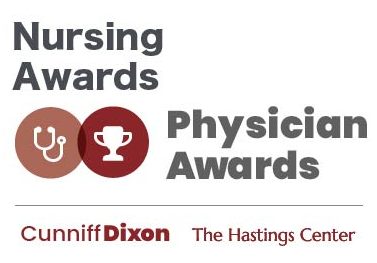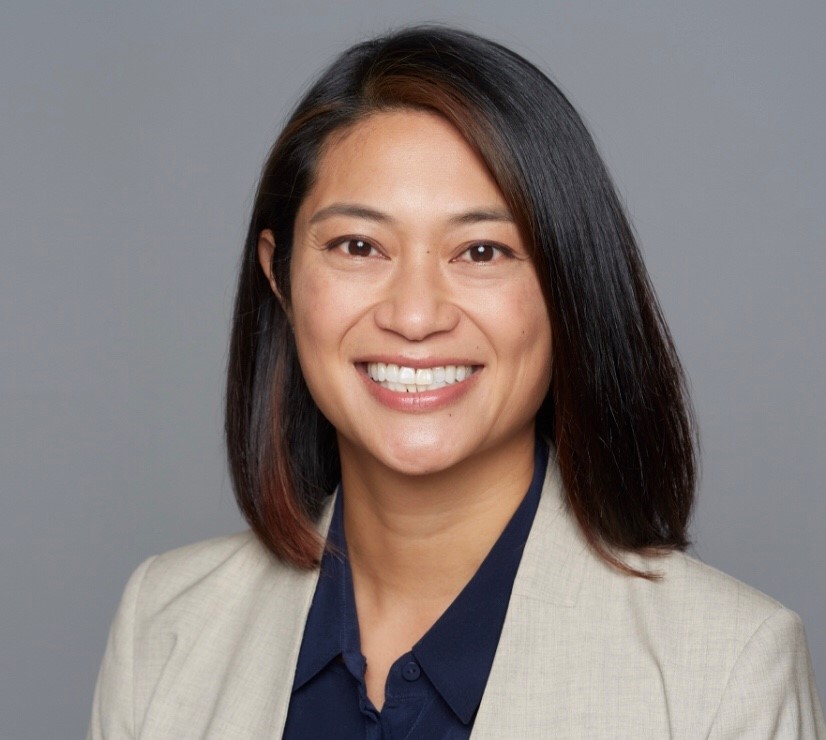Under her leadership, the Visiting Doctors Program has created a safety net for more than 1,200 homebound patients and provided a comfortable setting for those who wish to die at home. “The success of the Visiting Doctors Program in providing end-of-life and primary care in a challenging health care environment is the result of Theresa Soriano’s advocacy, her passion for caring for the under-served, and her deep understanding of the importance of the person within the patient,” wrote David Muller, MD, dean for medical education at Mount Sinai School of Medicine, in his nomination letter.
Even with her extensive administrative responsibilities, Dr. Soriano is in the trenches, delivering care to homebound patients and their caregivers, mainly in East Harlem and Washington Heights, two of New York’s most underserved neighborhoods. “Whether it is for the patient at the bedside, the trainee struggling to make sense of caring for someone at the end of life, the faculty member delicately balancing doing ‘the right thing’ with the demands of a career in academic medicine, budget negotiations with hospital administration, or lobbying in the state legislature, Dr. Soriano brings to bear her intellect, passion for justice, and keen interpersonal skills to get the job done,” Muller said.
She received her medical degree from Mount Sinai School of Medicine in New York in 2001.
Q&A with Theresa Soriano
1. Describe the pathway that led you to palliative medicine- what and who influenced you?
Even before I became a home-based primary and palliative care physician, I was exposed to palliative medicine during a rotation in medical school. The focus on the person and caregiver, an interdisciplinary team working together to help patients and their loved ones understand all of the medical jargon so they could clearly articulate their goals for their care and being advocates with the many specialists and providers to help patients realize those goals was much more how I thought doctors should be than what I learned through my training was actually the case. It is no surprise that I found my way back there after my training in internal medicine and started practicing primary care for homebound older adults through the Mount Sinai Visiting Doctors Program.
2. In your opinion, what is most misunderstood when it comes to Palliative Care?
People mislabel palliative care as care provided when there is no other hope. In reality, palliative care can give people MORE hope. Ideally, palliative care is provided alongside disease-directed therapies, from the moment of diagnosis of a serious illness all the way through cure (supportive care), or in some cases, through periods of worsening and improvement (specialty palliative care), and via the hospice benefit, providing support and comfort in the last months of life. When palliative care is provided alongside disease directed care, people do better with their therapies, feel better because symptoms are managed and in some cases even live longer.
3. What were some of the barriers you encountered as you became a champion for palliative medicine when it was not universally understood and accepted?
In 2009, I was giving a lecture to medical colleagues on the benefits of home-based primary and palliative care. At this time, there was not yet the large body of published evidence showing how home-based care (including palliative care) improved patient symptoms, satisfaction, and reduced unnecessary trips to the emergency room or hospital as I had just presented our program had achieved. A more senior colleague asked the question “how do you know that going to someone’s home and holding their hand isn’t just a placebo effect, and sending a clown with balloons wouldn’t get you the same results?” I was not prepared for that question and responded by acknowledging the need for more research on this topic, but that there had once been a time when people didn’t’ believe the world was round until it was proven.
4. What have you found helpful in explaining palliative and end of life care to the layperson?
I often say palliative care is specialist care that focuses on the whole person and addresses all of a person’s needs when a serious illness is diagnosed and throughout the process of treatment and healing. It is hard to explain, but when someone experiences it, they are so appreciative and value it.
5. Will you touch upon your work with the Visiting Doctors program at Mount Sinai (MSVD) – some of your experiences, and your success?
See above. MSVD was my first job out of training, as a full-time provider, and the luckiest decision I made. It encompassed everything I went into medicine to do — treat a patient as a person, work with different disciplines to address a patient’s and their family’s complex needs, both medical and non-medical. I took on progressive leadership roles, as director and then outside the program (see below), but always stemmed from the invaluable experience seeing patients in their own surroundings, helping to create and carry out care plans that aligned with their goals and wishes, and harnessing the resources in their homes and communities to help support them through their journeys. I am still struck by how often, just by understanding patients’ needs and helping solve problems knowing about their surroundings and priorities, it was possible to manage and improve medical conditions and people’s function over a few months, when they had long been labeled “poorly controlled,” “noncompliant” or “difficult.”
6. How has that experience broadened your work in the field today?
The principles of person-centered care, attention to medical and non-medical determinants, care rooted in community and focusing on goals and function are central to population health interventions for other vulnerable groups. My experience leading home-based primary and palliative care programs expanded to opportunities in leadership roles within population health, care management, and in recent years helping with start-up companies serving patients in the community.
7. What are the more recent changes and trends you are witnessing in palliative medicine?
For better or worse, there is more data showing that palliative care improves outcomes and patient experience. As a result, there is increasing focus on palliative care interventions in all care settings and in many sectors, public and private, nonprofit and for-profit. Overall, this is a positive thing, but we need to be vigilant that the care that is delivered through these new programs are providing high-quality care rooted in best-practice and evidence.
8. Advance care planning is an important part of the palliative care process- what are the barriers you’ve encountered in getting patients to prepare a plan for future care?
I actually have had little difficulty in this. When you lead the conversation by first listening to understand what people’s goals and wishes are and ensuring they understand their diagnoses and what to expect, then making progress towards advance care planning becomes a natural step in the process to “put their words into writing so others who may take care of you in the future can understand what we have discussed and honor your wishes.”
9. Why is it important to have a plan before we need one?
I often discuss with patients and families that advance care plans (or advance directives) is like having insurance. It is insurance that your loved ones and caregivers (including care team) know your wishes and goals and what “a good life” means to you when you’re able to express yourself.
10. If you could have one conversation with someone making end-of-life decisions what would be most important for you to convey?
When given the choice, the majority of people, including Americans, describe wanting the type of care central to a palliative care philosophy: care focused on personal goals, preservation of function and quality of life outside of a hospital over just length of life, addressing medical, spiritual and practical needs for both themselves and caregivers, and often less, not more care within facilities like ERs, hospitals or nursing homes. When death is near, most people want to be comfortable and surrounded by loved ones at home, not by machines or personnel. We, as
a health care system, should listen to what people want, and decisions that promote those wishes to be granted, not resist them.
11. If people would like to reach you directly for additional information or assistance, how would they do so?
Can email me directly (theresa.soriano@prospero-health.com).

